Syren pro-staffer Kate Ahnstrom has been busy this past year, teaching shotgun and guiding field hunts in central Virginia, at her business, Virginia Shooting Sports. With the trend of more people hunting, we wanted to check with Kate about transitioning from the shotgun sports to the hunting field and what that entails.
Sponsored by Syren USA
Based on your experience, what comes first? Wanting to hunt or wanting to shoot clays?
I don’t know that there’s still a hard and fast line … but from my experience in the past few years there’s been more of a bleed over from the clay course to the hunt field. Initially, I think it was that if you wanted to get into hunting birds you knew that you needed to go and shoot a few clays to hone your skills, but it was just to get comfortable with shooting and understand the safety involved … and then you just went right to the hunt field and didn’t really bother to go back to clays. Now I’m noticing that more people are saying, “Down the road and I mean, you know, in the next two to three years, I think I’d probably like to try some bird hunting. But, for right now, I just want to shoot clays.” That’s kind of the thought process that I’m seeing from the majority of my students. I’m not sure if it’s a hesitation to try hunting or a stronger desire to better at shooting in general before involving live animals but, either way, I am happy more people are spending time on the clay course working on their fundamentals.
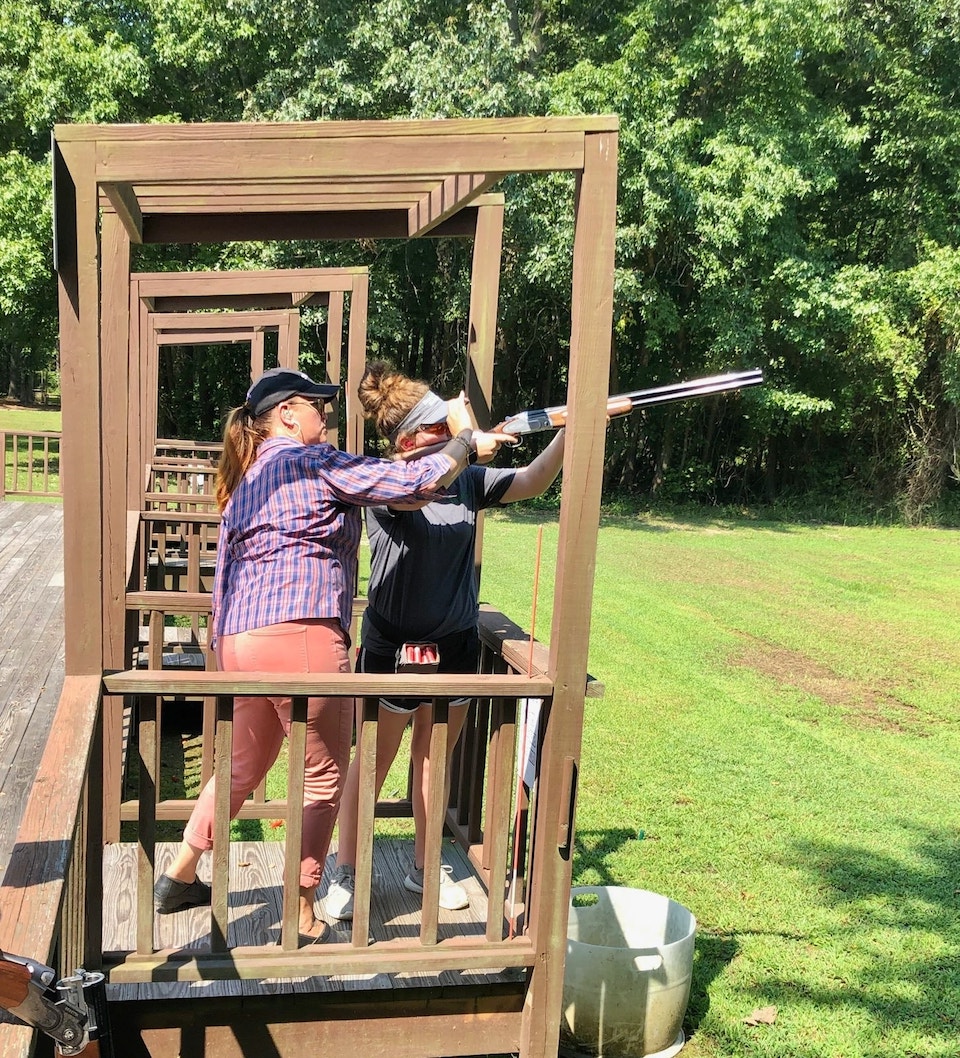
What’s the age range of your students?
I would say probably late 20s to mid 60s … I think COVID is the main catalyst for a lot of my 30s and 40s group, because they have kids that are old enough that they can get into doing something like this and because of COVID, they weren’t comfortable doing anything indoors, or there was no option to do anything indoors while maintaining guidelines. So, I think being outside and participating in something moderately physically active was very enticing to them. Then, I also have the people that are transitioning into retirement or finding themselves not necessarily maybe ready for retirement, but again, because of COVID, they are saying, ‘I’m home a lot more because I’m working from home now and I’m getting a lot more work done, so I actually have a lot more free time.’
It’s kind of funny. It was weird at first, but I have gotten used to it. I would have parents pull up, and they’ve got their 14-year-old kid in the car and Dad would pop his head out and say, ‘ Hey, she’s almost finished with her geometry. She’s just got five more minutes of class.” I never thought about the reality that because class is now virtual a kid can just stay on the laptop, ride to the course and have their class to go and still squeeze in a clay lesson.
We’ve touched on mindset a little bit, but you shoot clays and hunt birds. What’s the major difference between being on a clays course and being on the hunt field?
Being on the hunt field, the big thing is the dogs and having all of your senses engaged. I’ve had several times, I’ve had to remind students, ‘Hey! Birds! Shoot the birds and stop looking at the dogs!’ They just get so enthralled by watching the dogs work. Just about everyone I take on a hunt always mentions that being able to watch the dogs work is really half of the fun. Being on the hunt field is more engaging and a social encounter.
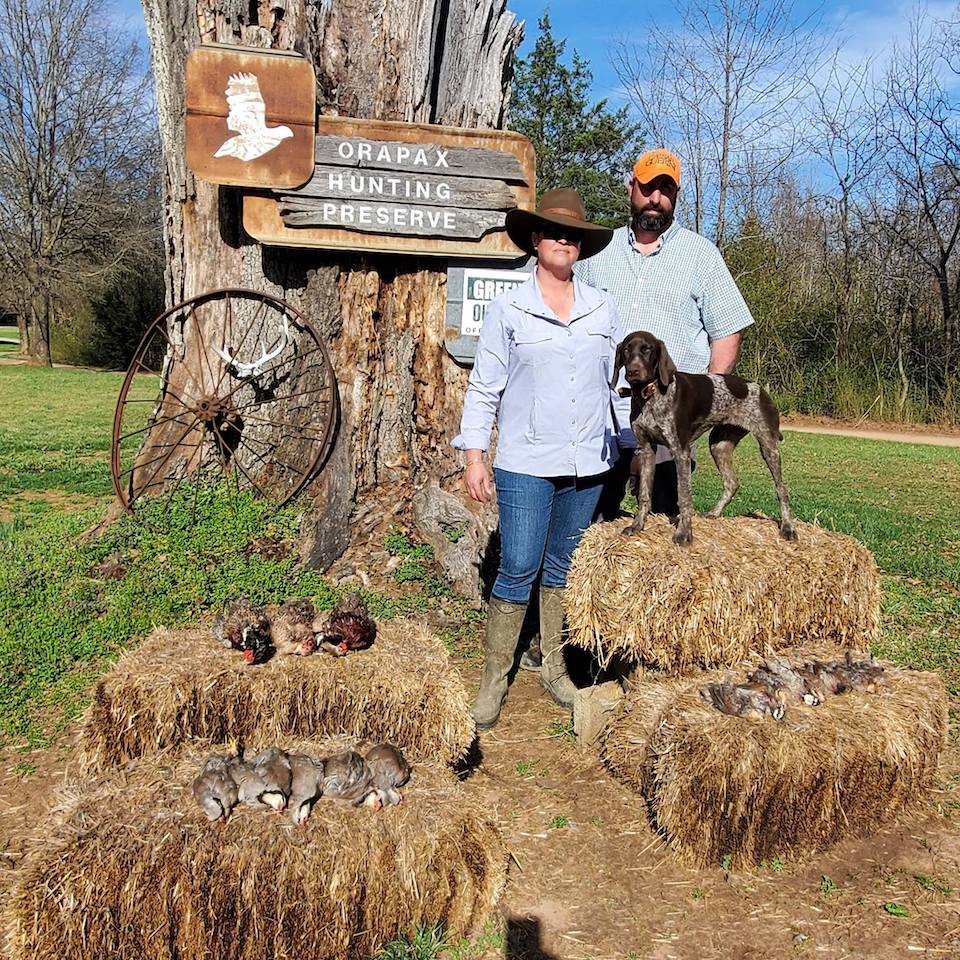
Being on the clays course, you’re out there and you’re having fun. You’re working on maybe a particular presentation or just enjoying a round with friends. You’re walking station-to-station on a clay course, which does have a somewhat physical aspect, but it’s not the same … The pace of the hunt field is just so different from the clay course. You could be walking along at a leisurely pace chatting and watching the dogs and the next second, you find yourself hustling to get set up and ready for a heart-pounding flush!
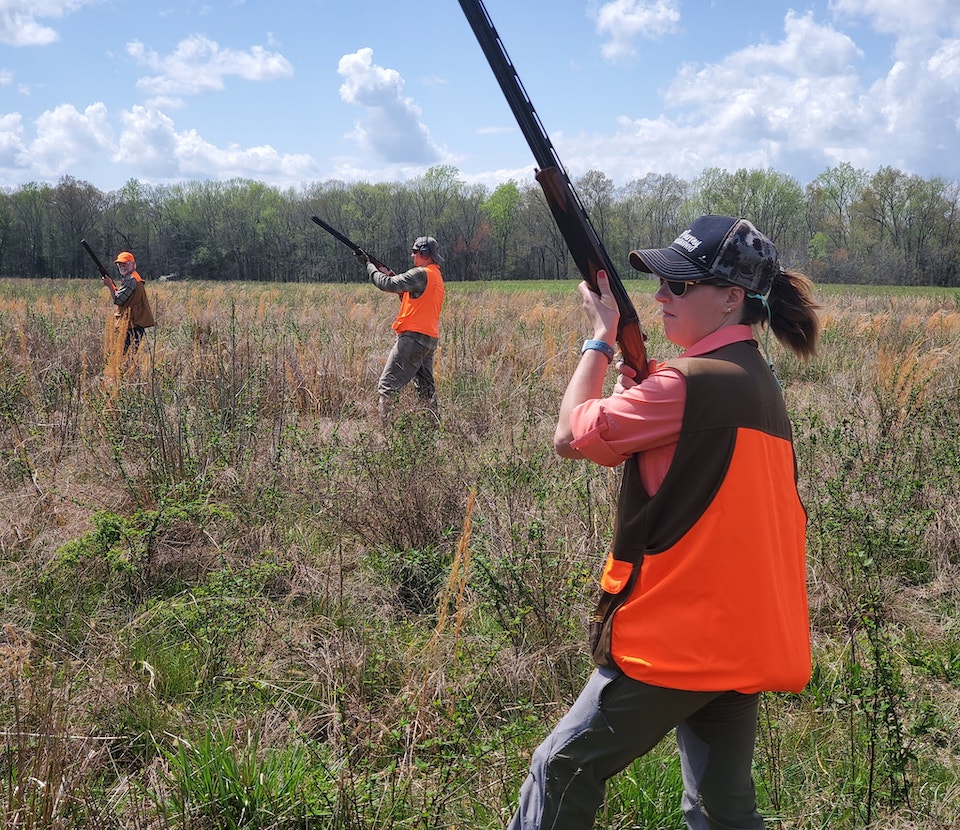
I don’t think a lot of people understand how physically fit you need to be to be able to bird hunt?
On my beginner hunts, everybody understands that you know it is going to be physically engaging. We take probably about three, good breaks over the course of the hunt and I tell my guides, ‘Look, at three hours we’re done.” For a brand new hunter, it can be very exhausting hiking through thick cover, chasing behind the dogs to get up to the point and dealing with the elements of nature. I have hunts that I’ve denied people because it is better suited for a more experienced hunter and requires a whole different level of physical ability. I’ll say, ‘I’m really sorry, but I don’t think you’re there yet. You need to get a couple more hunts under your belt and more comfortable with your gun.’.I love having different preserves to offer to my students because it allows me to ratchet up the intensity as the student becomes more proficient. Orapax Hunting Preserve is perfect, producing stellar hunts for beginners and intermediates. The Preserve at Dundee offers a more traditional, intimate hunt for those seeking a manor-style feel. Little George Farm is probably the next best thing to actually booking a pheasant hunt out West, and all of these preserves are right here in central Virginia!
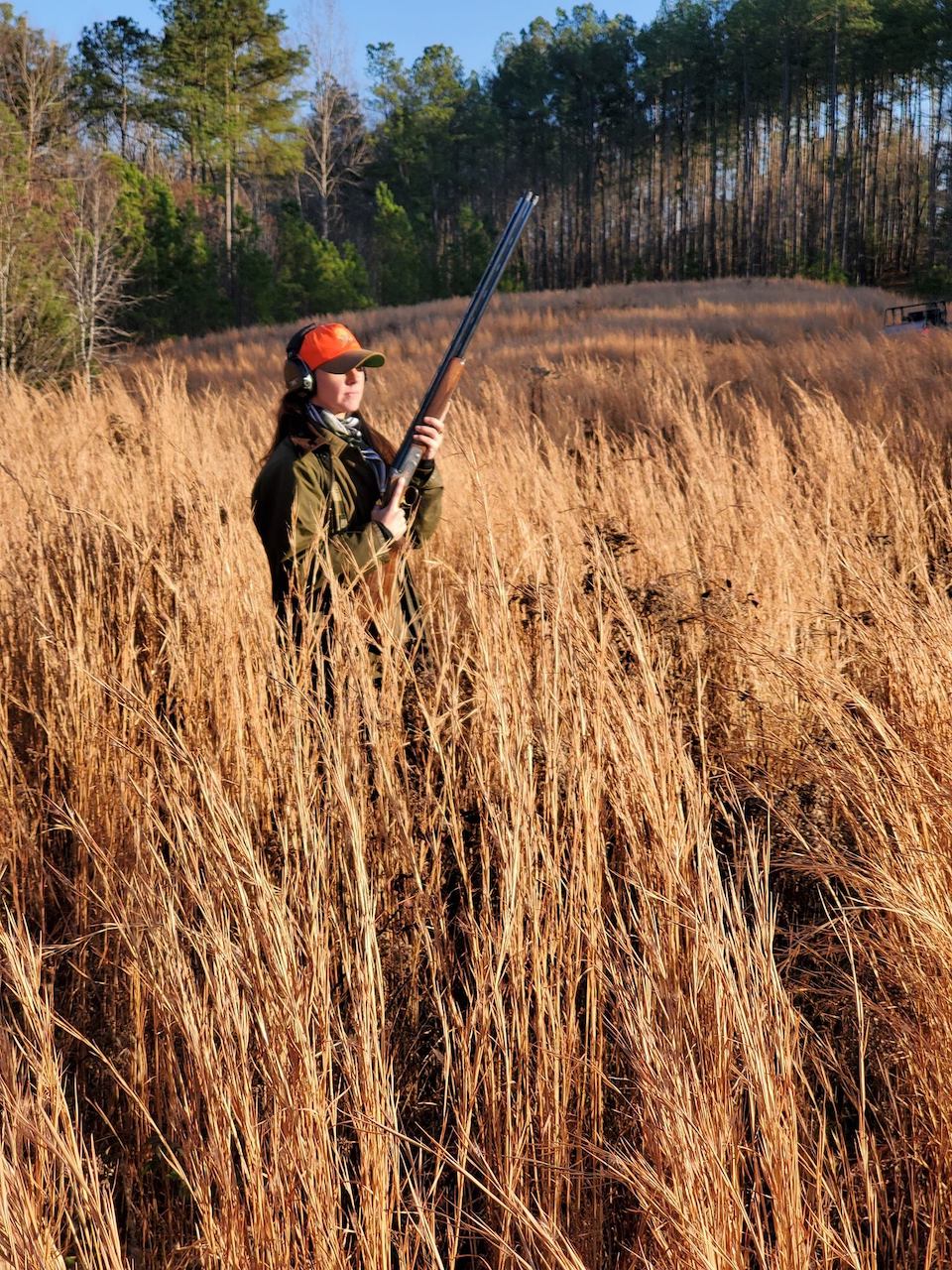
The hunt field engages you a lot more and naturally demands a lot more. For some reason, just the past month, I’ve been asked this question several times in conversation: ‘Should I do skeet, should I do trap, should I do I just sporting clays or should I really just focus on hunting?’ And I tell people that my skeet guys and girls fall apart on the sporting clays field. My hunt guys and girls fall apart on any course, whereas my sporting clays guys and girls can walk in confidently on skeet, trap, and the hunt field. And, that’s why I love sporting clays so much, because you’re honing skills for all the disciplines. The sport was literally created to make you a better hunter and that’s exactly what it does, if you put in the practice.
What about the gear changes?
As far as the gun, typically if somebody has been in the hunt field with me for upland with cracking guns, I typically have everybody place modified chokes in the top, improved cylinders in the bottom – which is the same thing I tend to have everybody set up for the clay course. Waterfowl and turkey are a whole different beast and require different types of loads and normally, an autoloader if preferred. Dove fields might require a little tighter chokes, modified chokes, or a light modified … just to reach out a bit farther. When going from the hunt field to the clay field, you are switching from a bird vest to a shooting vest. But, typically, the gun is still set up the same.
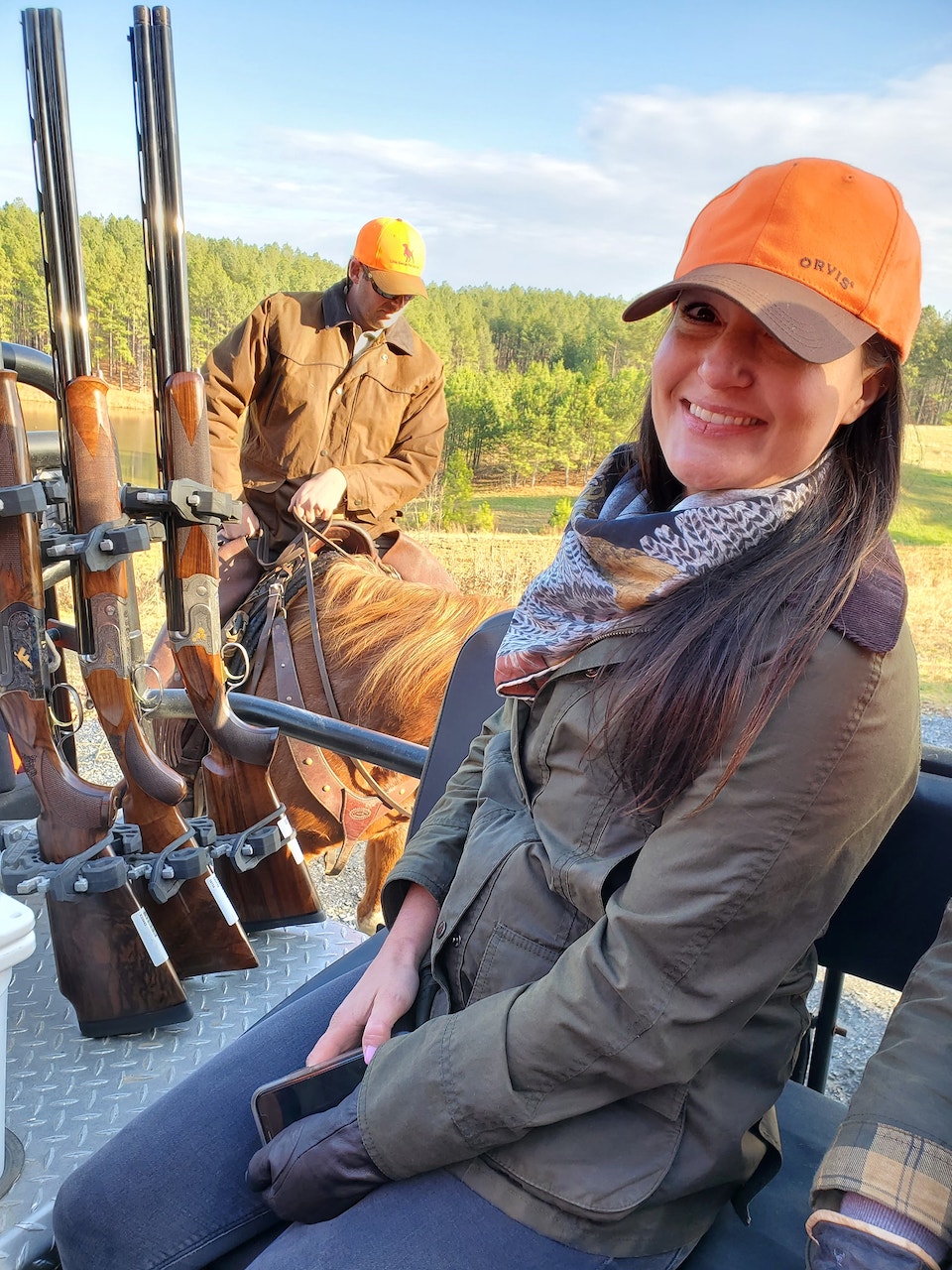
In regard to shot sizes preference of loads, the shortages of ammo that everyone is experiencing is dictating we just pretty much shoot whatever we can find. I know that it has become almost impossible to find 20-gauge ammo. I just finally found some but was limited to 3 flats in the delivery. I think 20 gauge has become so scarce because usually a new shooter will gravitate to that gauge so that they are getting more bbs out in front of them, but not particularly dealing with as much noticeable recoil.
What about changing guns? Do you need a dedicated field gun or clays gun?
This year, I’m shooting a Syren Tempio Sporting 20 gauge that’s meant more for the clay course than the hunt field, but I certainly use it on hunts. Of all the guns that I have, my husband certainly has his favorite. Whenever I ask him what he wants to shoot, when has to drop birds for dog training classes, and for hunts – he immediately looks at me and says, ‘You know what I want? I want the Tempio.’ And he’s 6’7”, but he shoots the wheels off of it. So, if you’re comfortable carrying a little bit heavier gun in the field, then the sporting model can certainly work for you.
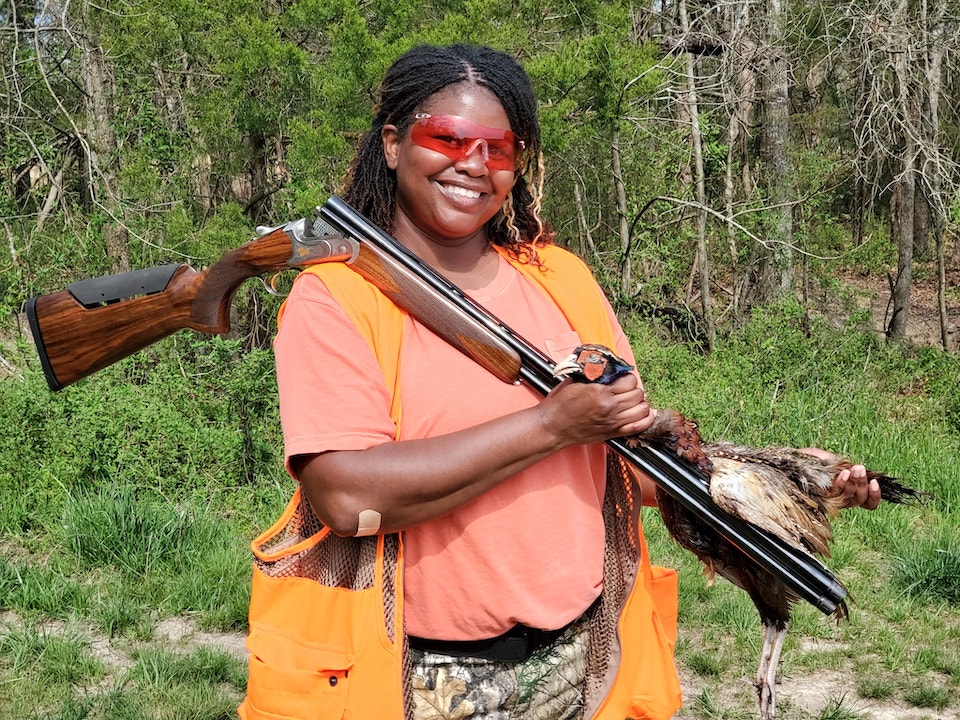
I have had quite a few students pick up the Elos D2 to this year, which is just a phenomenal gun because it does have that hybrid ability to go from the hunt field to the clays course, and it’s lighter than the Tempio Sporting. The Woodlander also has become extremely popular for the same reason.
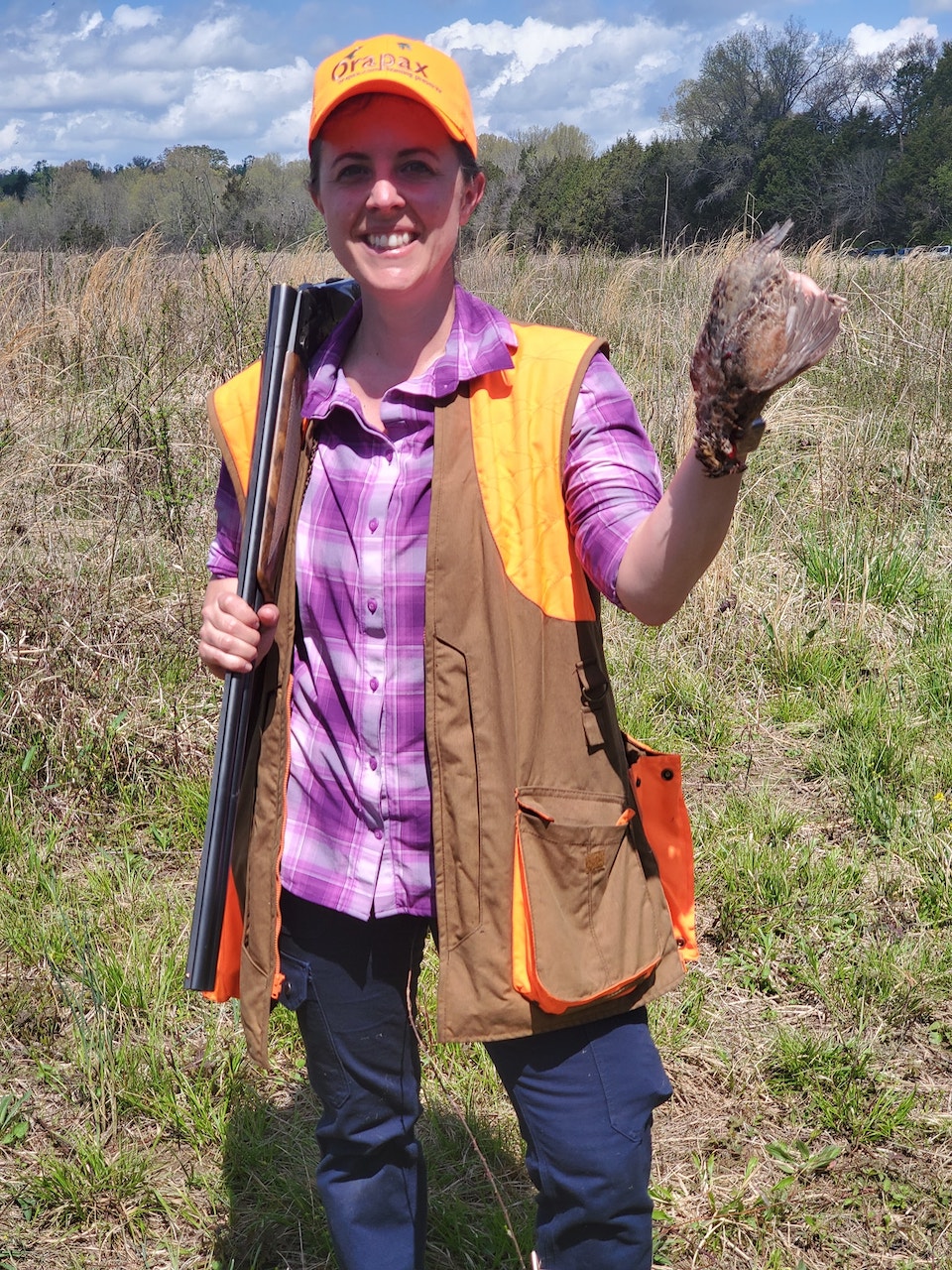
I think that manufacturers are understanding that we all want to own four or five different guns for each of our disciplines, but that may not be affordable to keep them all in our gun safes. So having one or two hard working guns that are more universal is more optimal – especially if one is a hybrid between the clay sports and the hunt field. Syren, Caesar Guerini and Fabarm truly understand this concept and have really been producing some tremendous guns that a shooter can easily take through several different disciplines and also use it to hunt. Best of all, they never sacrifice fit and finish.
What will you be hunting next?
I’m on a little bit of a lull until we pick up for Labor Day weekend with doves. It’s my favorite birdie of all. When a dove field is hot, there is nothing like it. I am a warm weather person and have a long list of recipes for doves. It’s a great match!
Can you dry fire at home to improve your skills?
That’s a really good question. I do assign homework, even to my students that don’t even own a gun. There are things that someone who is really brand new and starting to get into the sport can do to practice, if they haven’t gone out and purchased a gun yet. I usually will have them practice their sight picture. It may sound silly, but just take a long stick or broom and, put it up like you’re shouldering a gun. With it shouldered, head down just like on a gunstock, follow along the seam between your ceiling and your wall. You look right at that seam, and you can see the end of the stick in your peripheral, but you’re not looking at it; you’re just developing that sight picture of bird-barrel relationship and being able to see through it.
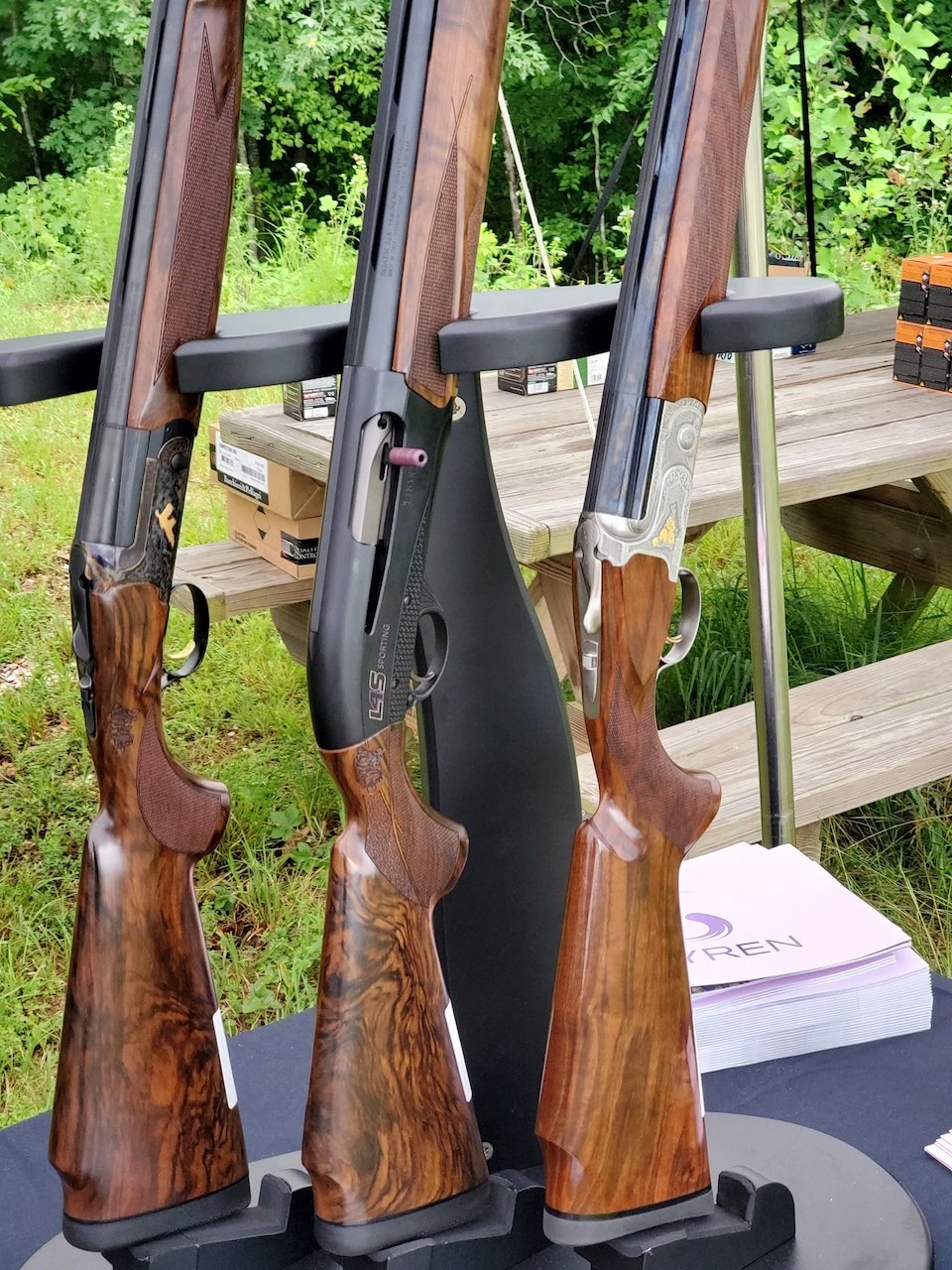
What else can people do to improve their shooting skills off the range?
The other thing is just having them point a finger out in front of their face at something 10 yards away and cover it with their finger without looking at their finger. When they do that, it’s like their finger is just a halo, or a ghost finger, and they can see through it and they can see all the details of the object beyond their finger at which they’re pointing. Again, it just helps to build the site picture so that when they do get a gun up in front of their face at the next lesson, it’s not like we’re starting from Ground Zero again. They can say ‘All right, I don’t need to look at the bead or the end of the gun. I get it!’
How many reps? Just do it 10 or 15 reps a day. It’s just a simple little exercise. It sounds silly, but you’d be amazed. When the student comes back for another lesson, I know who has or hasn’t done it, because with the first half a dozen shots through the gun, they’re either crushing bird after bird or struggling with remembering what they were supposed to be doing.
Anything else?
It’s just been wonderful having so many new people – people from all walks of life – people I would never have guessed would be interested in hunting and just watching them evolve from someone who wanted to just shoot some clays to six months later, trying the beginner hunt, to now owning a dog and a gun and a vest. It’s really awesome to see that progress.
Find out more about Kate Ahnstrom.
To find a Syren gun for your purposes, visit Syren online.
Publisher/Editor Barbara Baird is a freelance writer in hunting, shooting and outdoor markets. Her bylines are found at several top hunting and shooting publications. She also is a travel writer, and you can follow her at https://www.ozarkian.com. View all posts by Barbara Baird